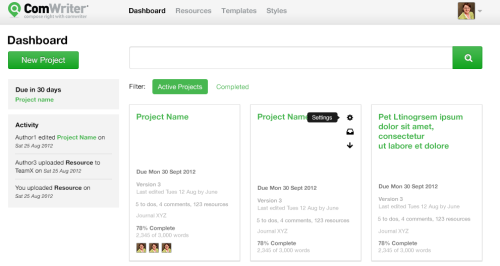Whether you are writing a paragraph, an essay or an entire book, PREP holds the key to writing a logical and coherent message.
PREP is an acronym for Point, Reason, Example and Point. These four keys enable a writer to construct logical prose. Without a logical method, writing is a hit-and-miss affair. PREP ensures that your listener will take notice of what you have to say.
Every time you want to make a point, you need to:
- Describe the Point (P) you wish to make (e.g., business students need to learn how to conduct research).
- Explain the Reason (R) why your point is important so the reader knows why they need to know the point (e.g., proper research generates reliable and objective data on which management can base their decisions).
- Provide an Example (E) that illustrates your point (e.g., incorrect information about a competitor can lead to a costly and inappropriate advertising campaign).
- Describe the Point (P) you have made (e.g., research that is accurate and up-to-date ensures that management decisions are successful).
To provide a point without a reason is an assertion. An assertion does not justify the point or provide any basis upon which the listener should take notice of your point. To provide a point and a reason without an example might make your listener take notice, but makes it difficult to understand how it might relate to the situation being discussed. A point-reason-example (PRE) provides a logical and coherent argument that people must take notice of. The final point acts to meld the PRE into a conclusion that reinforces what it is you are trying to convey.
When the four sentences noted as examples above are joined, the result is:
Business students need to learn how to conduct research (P). Proper research generates reliable and objective data on which management can base their decisions (R). For example, incorrect information about a competitor can lead to a costly and inappropriate advertising campaign (E). Therefore, research that is accurate and up-to-date ensures that management decisions are successful (P).
The term “proper research” (in the second sentence) qualifies the term “research” (in the first sentence) and the balance of the second sentence outlines the rational or justification for doing “research” (as noted in first sentence). In the fourth sentence “accurate and up-to-date’’ provides a definition for “proper research” (second sentence), and “successful” explains the outcome that “reliable and objective data” (second sentence) has for a business decision (second sentence). All sentences act to reinforce different aspects of the point you are trying to make.
Note that the paragraph provided has no references. Therefore, it is a personal assertion (opinion) made by the writer. If we wanted to ensure that what we are writing is credible, we need to find a journal reference to back up the point being made (first sentence), why it is important to know this point (second sentence) and an example drawn from past research (third sentence). The final point does not need a reference as it is a conclusion made by the author as drawn from reading the articles summarised in the first three sentences. So an objective paragraph would look like this:
Business students need to learn how to conduct research (Smith, 2006). Proper research generates reliable and objective data on which management can base their decisions (Jones, 2007). For example, incorrect information about a competitor can lead to a costly and inappropriate advertising campaign (Peters, 2008). Therefore, research that is accurate and up-to-date ensures that management decisions are successful.
In this example I have drawn the point from Smith (2006); I found a rationale for the point written by Jones (2007), and Peters (2008) provided an example from her research that illustrates the point (P). By using references in this way I have paraphrased published writers (re-written their points using my words) and also supported my argument with other works that provide objectivity. (R). Objectivity acts to reinforce that what I am writing has validity and should be taken notice of (P).
If you follow the PREP logic in this last paragraph you will note that I have used PRP without an example (P). The example is not needed, because the point itself is acting as the example (R).
If you then follow the PREP logic in the previous paragraph you will note that I have used PR without an example or final point. This is because the previous paragraphs illustrate the point I am making (E), and a summation would merely act to repeat what I am saying (P).
In summary, PREP acts to provide a logical and coherent argument. PRP can be utilised where the writer considers an illustration to be unnecessary. PR can be used on its own, but only when the rationale for the point acts as the example. By using PREP to structure everything you write, you will command attention from your reader and ensure that the points you are making are worth listening to.


